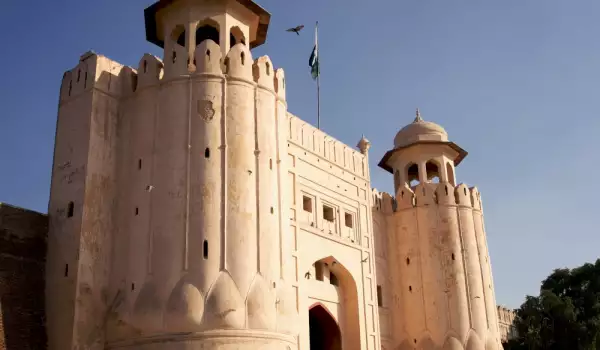Alamgiri gate in Lahore

Lahore is the second largest city in Pakistan, after Karachi, but a priceless historical treasure for the country. Towering Minar-e-Pakistan is a national symbol of all Pakistan, Badshahi Mosque the great fits continuous thousands of pilgrims and curious tourists from around the world. Badshahi was erected opposite to Lahore Fort, which is a symbol of imperial authority of the Mughal’s Dynasty.
With the building of the magnificent Badshahi mosque ruler Aurangzeb, ordered the raising of the gate Alamgiri, which faces west, opposite the temple. The portal was ready in 1673, and through it provided the most direct path to the Badshahi mosque, located just across the street.

Alamgiri Gate is more than a symbolic gesture, and thereafter became the main gate of the Fortress Lahore, about which actually reaches throughout the city. To locals, the portal is known as Alamgiri Darwaza.
Alamgiri Gate was erected on the eastern edge of the palace. In terms of architecture, it is distinguished by pomp, splendor and beauty , but its design is markedly simple and functional. In the corridor with rectangles Alamgiri Gate leads people to Diwan-i-Amm, which is part of the public administrative zone in the fortress Lahore.
Alamgiri Gate is an impressive vestibule, accompanied by two semicircular bastions, ending with large domed pavilions. In the central part of the portal Alamgiri is a huge entrance, which was specially designed so that the elephant caravan of the emperor would be able to pass safely.
In architectural terms the main entrance of the fortress Lahore is characterized by what is defined as "softening" of the style typical of the era of the Mughals in the later years of their management. The two guard towers of portal Alamgiri are folded and "go out" like the flowering buds of the lotus.
After Alamgiri Gate one steps into a large open courtyard in the north-east, where the entrance to the Moti Masjid is located. Called the Pearl Mosque, this temple was used for the personal needs of the royal family. East remains Diwan-e-Am, where once the emperors exported their public speeches.















